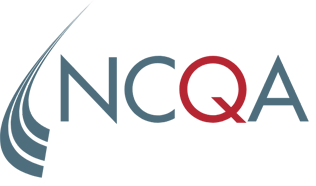What Football Teaches Us About Fragmentation
February 6, 2025 · Becky Kolinski
Every weekend, millions of fans watch their favorite teams rally around a shared goal: winning the game. But what if football teams only rewarded the offense for points scored or yards driven, or rewarded the defense for sacks, tackles and interceptions, without the mutual accountability to reach a common goal?
That’s where we are in quality measurement. The offense is scoring lots of points, the defense is blocking and tackling—we hope it all adds up to a win… but somehow, it doesn’t. And we’re frustrated because we’re working hard, and we’re paying more each year, but we’re not always seeing the results we want.
Quality improvement may not get as much attention as football, but it’s also a team sport. While you’re watching the big game this weekend (or just enjoying the commercials!) think about what football can teach us about fragmentation in health care.
Fragmentation vs. Integration
Measuring parts of the system—health care practitioners, hospitals, health plans—leads to fragmentation. Our nation’s health care system rewards organizations for their individual performance, but it doesn’t look at the ultimate outcome for the patient, or at the entire system. Each organization optimizes only its own performance. That’s the framework we’ve created.
We need to move from measuring parts of the system to measuring the system as a whole. By working as a team, we can shift from fragmentation to integration—with people and populations at the center instead of health plans and practitioners.
Moving Forward
Of course, the health care system is (a lot) more complex than a football team—but we can still benefit from creating a sense of teamwork and rallying around a shared vision.
Define the Common Goal. We need to create a single target—improving patient outcomes—that all health care organizations can focus on. This might sound like a simple idea, but that doesn’t mean it will be easy. First, we must agree on the information the industry needs in order to measure the quality of care being delivered, and whether that care responds to what people and populations want. Once we have that common industry roadmap, we can continue to innovate and collect data from new sources.
Align Measures and Incentives. Right now, we measure too many things, with data from too many sources—and the data doesn’t always agree. That’s because we designed measurement around the fragmented parts of the system. Measures and incentives should align around managing and reducing risk and improving overall health, while recognizing that there are many clinicians and organizations working to do the same thing.
Standardize and Share Data. Our industry has made great strides in digitalizing health care data through EHRs. But digitalization doesn’t mean standardization. And policies that require standardized clinical data for quality measurement, risk adjustment or prior authorization aren’t fully implemented. We need a common data quality framework that lets us trust the data. TEFCA, for example, is setting the foundation for health care organizations to share data for specific purposes.
How Digital Transformation Can Help
The transition to digital quality measurement can make it easier to achieve our goals by enabling interoperability and data sharing—including clinical data—across the industry. When data flows seamlessly, organizations can provide better care and measure outcomes with less burden.
Get in the Game
- Listen to this recent Healthcare IT Today podcast on the value of digital transformation.
- Visit our Digital Quality Hub for help designing your digital quality playbook.
- Learn more about NCQA’s Digital Content Services.
- Join our Bulk FHIR Quality Coalition.
- Join our Digital Quality Implementer’s Community.








